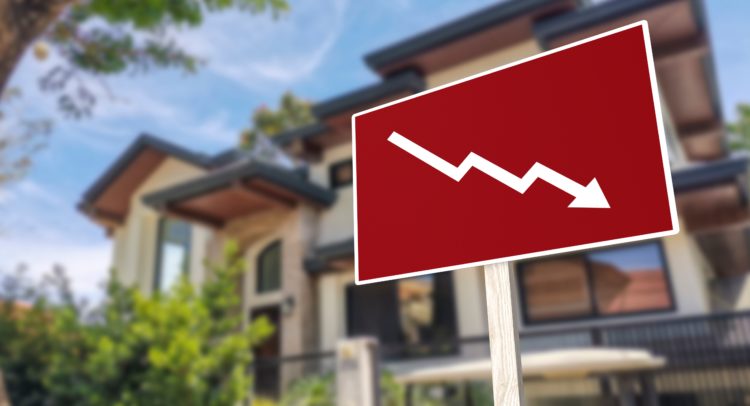Invitation Homes (INVH), one of the fastest-growing residential real estate investment trusts, continues to deliver strong results. Yet, the risks attached to residential REITs have increased uncertainty for investors, with the industry likely approaching a pivotal moment. I am neutral on the stock.
A Speculative Post-COVID Residential Real Estate Market
On the one hand, consumers seem, at the moment at least, to be willing to pay surging rents. Following the working-from-home economy, which sprouted as a result of the COVID-19 pandemic a couple of years ago, residential properties gained increased leverage over their office and retail peers.
With hybrid working conditions gaining further traction as well as a strong consumer economy, residential rents have remained elevated and even surged further. For context, the average monthly rent for a two-bedroom apartment in the U.S. stood at $2,106 in July, up 38.3% year-over-year.
On the other hand, as inflation and oil prices remain at elevated levels, electricity prices surge, and the monetary policy tightens, it’s reasonable to support the case that rents will eventually have to normalize, led by declining consumer strength.
Amid such concerns, shares of Invitation Homes have declined by 19% year-to-date. Yet, the company’s results remain relatively strong, and its outlook appears quite promising for the time being.
What Does Invitation Homes Do?
Invitation Homes owns and operates single-family homes for lease. Particularly, the company furnishes its residents with high-quality homes in quality neighborhoods that are repeatedly in high demand across the United States.
As of its latest filings, Invitation Homes had over 80,000 homes for lease in 16 markets across the U.S. Its properties aspire to meet the constantly adjusting lifestyle needs by offering access to quality, renovated homes with valued attributes such as closeness to regions with elevated employability prospects and access to fine schools. This model has allowed the company to adapt quickly to the current market environment.
Strong Results Despite Recent Concerns
While the ongoing market environment has linked increased uncertainty to residential REITs, Invitation Homes’ strategy growth strategy continues to yield quite strong results.
In its Q2 results, the company recorded revenue growth of 13.4% year-over-year to $557.3 million. It actually implied an acceleration compared to Q1’s revenue growth of 12%. Increased revenues were driven by new leases, rent evolution on renewals, and elevated occupancy levels, as demand for homes remained robust despite the ongoing concerns.
The REIT’s average occupancy remained very strong, at 98%, even though it dropped from 98.4% in Q2 2021. Additionally, the company recorded fantastic same-home new lease rent growth of 16.7% and same-home renewal rent expansion of 10.2%. Therefore, blended rent growth expanded by 380 basis points to 11.8%.
During the quarter, Initiation Homes’ management team continued to grow the company’s property portfolio. Particularly, the company acquired 955 homes for $426 million and disposed of 183 homes for $74 million, resulting in a net expansion.
It’s worth noting that despite Invitation Homes’ share count advancing as a result of the equity issuances that were employed to finance these home purchases, adjusted FFO per share rose 12.5% to $0.36 following sharp expense management.
For the second half of 2022, management foresees that the market for single-family rental homes will be sustained at healthy levels. This is backed by the premise of stable job growth and encouraging demographic indicators in the markets in which the REIT’s homes are located.
Consequently, and by taking into regard the company’s numbers during the first half of the year, management actually upgraded its prior guidance. The company is expected to post AFFO per share between $1.41 and $1.47 (up from $1.38 and $1.46 previously).
At the midpoint, this implies growth of 12.5% against Fiscal 2021, proposing another booming year for the company, despite the underlying speculation surrounding the residential real estate market.
The Dividend Isn’t Exciting, but Its Growth Prospects Are
Yielding just around 2.4%, Invitation Homes’ dividend may not appear to be particularly exciting. However, backed by its underlying AFFO/share growth, the company’s dividend growth prospects are indeed quite vigorous.
Following the trend of its rapid AFFO/share growth since its IPO, the company has lifted its dividends per share rapidly. In Fiscal 2020 and Fiscal 2021, Invitation Homes increased its dividend per share by 15.4% and 13.3%, respectively.

Based on the midpoint of its Fiscal 2022 AFFO/share outlook, the payout ratio stands at around 61%. Hence, it’s quite viable for the dividend to continue growing in the double-digits, supported by the company’s ongoing growth and rather ample room for dividend growth.
How to Value Invitation Homes in the Current Environment
As we’ve discussed so far, Invitation Homes is currently enjoying robust growth momentum, but the residential real estate is likely to face some headwinds. Therefore, valuing the stock has become more speculative.
On top of that, there is another factor to consider when valuing Invitation Homes. The company records AFFO, which stands for adjusted funds from operations. Unlike FFO, AFFO also includes recurring capital expenditures. Consequently, the denominator in P/AFFO is smaller, automatically leading to an elevated valuation multiple against P/FFO. Thus, an extra premium in the stock’s multiple in that regard is warranted and should not shake investors if put into context.
At the midpoint of management’s AFFO/share outlook, the stock’s present price indicates a forward P/AFFO of about 25x. This multiple appears oddly high for a REIT and could justifiably be supposed to be rich. However, when taking into account what I just mentioned regarding the company’s adjusted metrics, it’s easier to understand the reasoning behind it.
Still, I believe that shares would be more fairly valued at a P/AFFO in the low 20s. While Invitation Homes’ double-digit growth warrants the stock a premium, the ongoing shaky macroeconomic environment is likely to eventually impact the company’s results and slow down its ongoing momentum.
Is INVH a Good Stock to Buy?
Turning to Wall Street, Invitation Homes has a Strong Buy consensus rating based on 15 Buys and two Holds assigned in the past three months. At $43.29, the average Invitation Homes stock forecast implies 17.9% upside potential.

Conclusion: A Solid Residential REIT, but Proceed with Caution
Invitation Homes is a quality company and appears to be one of the better plays out there for investors who seek exposure in the residential real estate market. In particular, dividend-growth investors are likely to appreciate the stock’s dividend growth prospects.
That said, one should remain skeptical, as shares of Invitation Homes could be relatively overvalued presently. The ongoing macro setup is likely to reduce household income levels, draining the company’s ability to expand its financials at its ongoing rates. This could lead to a powerful valuation multiple compression, harming shareholder return prospects.



















